The Facts About Declawing Cats
Feline Amputation (Onychectomy) - What You Really Need To Know
The Cat
The cat is born with claws as a means of defense. Large cats and small cats use their claws to hunt, to dig, and to fight. Taking a cat's claws away from them, leaves them defenseless, and will lead to death if the animal is left outside. If you are thinking about having your cat de-clawed, think of this first: How would you survive if you had no fingers?
The Cat's Claws
Unlike most mammals who walk on the soles of the paws or feet, cats are digitigrade, which means they walk on their toes. Their back, shoulder, paw and leg joints, muscles, tendons, ligaments and nerves are naturally designed to support and distribute the cat's weight across its toes as it walks, runs and climbs. A cat's claws are used for balance, for exercising, and for stretching the muscles in their legs, back, shoulders, and paws. They stretch these muscles by digging their claws into a surface and pulling back against their own clawhold - similar to isometric exercising for humans. This is the only way a cat can exercise, stretch and tone the muscles of its back and shoulders. The toes help the foot meet the ground at a precise angle to keep the leg, shoulder and back muscles and joints in proper alignment. Removal of the last digits of the toes drastically alters the conformation of their feet and causes the feet to meet the ground at an unnatural angle that can cause back pain similar to that in humans caused by wearing improper shoes.
Understanding Declawing (Onychectomy)
The anatomy of the feline claw must be understood before one can appreciate the severity of declawing. The cat's claw is not a nail as is a human fingernail, it is part of the last bone (distal phalanx) in the cat's toe. The cats claw arises from the unguicular crest and unguicular process in the distal phalanx of the paw (see above diagram). Most of the germinal cells that produce the claw are situated in the dorsal aspect of the ungual crest. This region must be removed completely, or regrowth of a vestigial claw and abcessation results. The only way to be sure all of the germinal cells are removed is to amputate the entire distal phalanx at the joint.
Contrary to most people's understanding, declawing consists of amputating not just the claws, but the whole phalanx (up to the joint), including bones, ligaments, and tendons! To remove the claw, the bone, nerve, joint capsule, collateral ligaments, and the extensor and flexor tendons must all be amputated. Thus declawing is not a simple, single surgery but 10 separate, painful amputations of the third phalanx up to the last joint of each toe. A graphic comparison in human terms would be the cutting off of a person's finger at the last joint of each finger.
Many vets and clinic staff deliberately misinform and mislead clients into believing that declawing removes only the claws in the hopes that clients are left with the impression that the procedure is a "minor" surgery comparable to spay/neuter procedures and certainly doesn't involve amputation (partial or complete) of the terminal-toe bone, ligaments and tendons. Onychectomy in the clinical definition involves either the partial or total amputation of the terminal bone. That is the only method. What differs from vet to vet is the type of cutting tool used (guillotine-type cutter, scalpel or laser).
Onychectomy (Declawing) Surgery
Contrary to misleading information, declawing is not a "minor" surgery comparable to spaying and neutering procedures, it is 10, separate, painful amputations of the distal phalanx at the joint (disjointing).
"The claw is extended by pushing up under the footpad or by grasping it with Allis tissue forceps. A scalpel blade is used to sharply dissect between the second and third phalanx over the top of the ungual crest . The distal interphalangeal joint is disarticulated (disjointed), and the deep digital flexor tendon is incised (severed). The digital footpad, is not incised. If a nail trimmer is used, the ring of the instrument is placed in the groove between the second phalanx and the ungual crest. The blade is positioned just in front of the footpad. The blade is pushed through the soft tissues over the flexor process. With the ring of the nail trimmer in position behind the ungual crest, the blade is released just slightly so that traction applied to the claw causes the flexor process to slip out and above the blade. At this point, the flexor tendon can be incised and disarticulation of the joint (disjointing) completed. Both techniques effectively remove the entire third phalanx." (Excerpted from: Slatter D; Textbook of Small Animal Surgery 2nd ed vol I, p.352 W.B. Saunders Company Philadelphia.)
Complications
Declawing is not without complication. The rate of complication is relatively high compared with other so-called "routine" procedures. Complications of this amputation can be excruciating pain, damage to the radial nerve, hemorrhage, bone chips that prevent healing, painful regrowth of deformed claw inside of the paw which is not visible to the eye, and chronic back and joint pain as the shoulder, leg and back muscles weaken.
Other complications include postoperative hemorrhage, either immediate or following bandage removal is a fairly frequent occurrence, paw ischemia, lameness due to wound infection or footpad laceration, exposure necrosis of the second phalanx, and abscess associated with retention of portions of the third phalanx. Abscess due to regrowth must be treated by surgical removal of the remnant of the third phalanx and wound debridement. During amputation of the distal phalanx, the bone may shatter and cause what is called a sequestrum, which serves as a focus for infection, causing continuous drainage from the toe. This necessitates a second anesthesia and surgery. Abnormal growth of severed nerve ends can also occur, causing long-term, painful sensations in the toes. Infection will occasionally occur when all precautions have been taken.
Laser Declawing Cruelty
Burnt tissue from laser declaw
Just like a scalpel, the laser is used to amputate the last bone of each of the cats's toes. Laser surgery has its own risks. This cat's tissue was overheated by the laser, resulting in exposed bone and necrotic tissue. The cat needed four additional surgeries before the wounds healed.
Secondary declaw surgery
This poor cat suffered for months with horrible infections and osteomyelitis. The second vet had to remove dead soft tissue and bone, including an entire toe from the paw on the right. The cat survived, but was permanently lame.
X-ray showing displaced bone fragments
This is a x-ray image of a typical declawed domestic cat paw. The retained fragment of the toe bone in a relatively normal anatomic position is indicated by arrow "A". "B" shows the fragment has been pulled under the paw by the tendon that is still attached. In this position, the fragment is situated between the remaining second toe bone and the pad, where it acts like a painful pebble-in-the-shoe.
Psychological & Behavioral Complications
Some cats are so shocked by declawing that their personalities change. Cats who were lively and friendly have become withdrawn and introverted after being declawed. Others, deprived of their primary means of defense, become nervous, fearful, and/or aggressive, often resorting to their only remaining means of defense, their teeth. In some cases, when declawed cats use the litterbox after surgery, their feet are so tender they associate their new pain with the box...permanently, resulting in a life-long adversion to using the litter box. Other declawed cats that can no longer mark with their claws, they mark with urine instead resulting in inappropriate elimination problems, which in many cases, results in relinquishment of the cats to shelters and ultimately euthanasia. Many of the cats surrendered to shelters are surrendered because of behavioral problems which developed after the cats were declawed.
Risk factors for relinquishment of cats to an animal shelter:
"Among 218 cats relinquished to a shelter, more (52.4%) declawed cats than non-declawed cats (29.1%) were reported by owners to have inappropriate elimination problems."
Source: World Small Animal Veterinary Association - 2001
Source: World Small Animal Veterinary Association - 2001
The incidence of behavior problems following onychectomy in cats; two months to five years (median 11.5 months) after surgery:
"(33%) developed at least one behavior problem.
"(17.9%) had an increase in biting habits or intensity."
"(15.4%) would not use the litter box."
Source: World Small Animal Veterinary Association - 2001
"(33%) developed at least one behavior problem.
"(17.9%) had an increase in biting habits or intensity."
"(15.4%) would not use the litter box."
Source: World Small Animal Veterinary Association - 2001
Many declawed cats become so traumatized by this painful mutilation that they end up spending their maladjusted lives perched on top of doors and refrigerators, out of reach of real and imaginary predators against whom they no longer have any adequate defense.
A cat relies on its claws as its primary means of defense. Removing the claws makes a cat feel defenseless. The constant state of stress caused by a feeling of defenselessness may make some declawed cats more prone to disease. Stress leads to a myriad of physical and psychological disorders including supression of the immune system, cystitis and irritable bowel syndrome (IBS).
Moral, Ethical and Humane Considerations
The veterinary justification for declawing is that the owner may otherwise dispose of the cat, perhaps cruelly. It is ethically inappropriate, in the long term, for veterinarians to submit to this form of moral blackmail from their clients.
"The Association of Veterinarians for Animal Rights is opposed to cosmetic surgeries and to those performed to correct 'vices.' Declawing generally is unacceptable because the suffering and disfigurement it causes is not offset by any benefits to the cat. Declawing is done strictly to provide convenience for people. The Association of Veterinarians for Animal Rights (AVAR)"
"Some veterinarians have argued that some people would have their cats killed if declawing was not an option. We should not, however, allow ourselves to taken 'emotional hostage' like this. If a person really would kill her or his cat in this case, it is reasonable to question the suitability of that person as a feline guardian, especially when there are millions of non-declawed cats living in harmony with people."
The Association of Veterinarians for Animal Rights (AVAR) position on declawing cats:
"A major concern that the AVAR has about declawing is the attitude that is evident in this situation. The cat is treated as if he or she is an inanimate object who can be modified, even to the point of surgical mutilation, to suit a person's perception of what a cat should be. It would seem more ethical and humane to accept that claws and scratching are inherent feline attributes, and to adjust one's life accordingly if a cat is desired as a companion. If this is unacceptable, then perhaps a different companion would be in order."
"A major concern that the AVAR has about declawing is the attitude that is evident in this situation. The cat is treated as if he or she is an inanimate object who can be modified, even to the point of surgical mutilation, to suit a person's perception of what a cat should be. It would seem more ethical and humane to accept that claws and scratching are inherent feline attributes, and to adjust one's life accordingly if a cat is desired as a companion. If this is unacceptable, then perhaps a different companion would be in order."
Dr. Nicholas Dodman, Professor of Behavioral Pharmacology and Director of the Behavior Clinic at Tufts University School of Veterinary Medicine and internationally known specialist in domestic animal behavioral research, explains declawing:
"The inhumanity of the procedure is clearly demonstrated by the nature of cats' recovery from anesthesia following the surgery. Unlike routine recoveries, including recovery from neutering surgeries, which are fairly peaceful, declawing surgery results in cats bouncing off the walls of the recovery cage because of excruciating pain. Cats that are more stoic huddle in the corner of the recovery cage, immobilized in a state of helplessness, presumably by overwhelming pain. Declawing fits the dictionary definition of mutilation to a tee. Words such as deform, disfigure, disjoint, and dismember all apply to this surgery. Partial digital amputation is so horrible that it has been employed for torture of prisoners of war, and in veterinary medicine, the clinical procedure serves as model of severe pain for testing the efficacy of analgesic drugs. Even though analgesic drugs can be used postoperatively, they rarely are, and their effects are incomplete and transient anyway, so sooner or later the pain will emerge." (Excerpted from The Cat Who Cried For Help, Dodman N, Bantam Books, New York).
"The inhumanity of the procedure is clearly demonstrated by the nature of cats' recovery from anesthesia following the surgery. Unlike routine recoveries, including recovery from neutering surgeries, which are fairly peaceful, declawing surgery results in cats bouncing off the walls of the recovery cage because of excruciating pain. Cats that are more stoic huddle in the corner of the recovery cage, immobilized in a state of helplessness, presumably by overwhelming pain. Declawing fits the dictionary definition of mutilation to a tee. Words such as deform, disfigure, disjoint, and dismember all apply to this surgery. Partial digital amputation is so horrible that it has been employed for torture of prisoners of war, and in veterinary medicine, the clinical procedure serves as model of severe pain for testing the efficacy of analgesic drugs. Even though analgesic drugs can be used postoperatively, they rarely are, and their effects are incomplete and transient anyway, so sooner or later the pain will emerge." (Excerpted from The Cat Who Cried For Help, Dodman N, Bantam Books, New York).
Declawing robs a cat of an integral means of movement and defense. Because they cannot defend themselves adequately against attacks by other animals, declawed cats who are allowed outdoors may be at increased risk of injury or death. Scratching is a natural instinct for cats and declawing causes a significant degree of privation with respect to satisfying the instinctive impulses to climb, chase, exercise, and to mark territory by scratching. Cats simply enjoy scratching. The sensible and humane solution to undesirable scratching is to modify the cat's conduct by making changes in the environment and direct the cat’s natural scratching behavior to an appropriate area (e.g., scratching post) rather than surgically altering the cat, thereby causing the animal pain, merely to fit the owner's lifestyle, aesthetics, or convenience.
The fact that many cats recover from the hideous experience of declawing without untoward effects, and even though they may not hold grudges, that doesn't seem sufficient justification for putting a family member through such a repugnant experience. In short, a declawed cat is a maimed, mutilated cat, and no excuse can justify the operation. Your cat should trust you, and depend upon you for protection. Don't betray that trust by declawing your cat.
Most people are vehemently opposed to declawing due to a combination of reasons: 1) because the end (owner convenience) doesn't justify the means (causing unnecessary pain to the cat); 2) because other, less harmful alternatives to declawing exist and 3) because claws are part of the nature or "catness" of cats. Overall, the view is that it is ethically inappropriate to remove parts of an animal's anatomy, thereby causing the animal pain, merely to fit the owner's lifestyle, aesthetics, or convenience without any benefit to the cat. It should be emphasized that "most people" includes virtually the entire adult population of Europe and many other countries around the world.
Many countries are particularly concerned about animal welfare and have banned declawing as abusive and causing unnecessary pain and suffering with no benefit to the cat.. One highly regarded veterinary textbook by Turner and Bateson on the biology of cat behavior concludes a short section on scratching behavior with the following statement: "The operative removal of the claws, as is sometimes practiced to protect furniture and curtains, is an act of abuse and should be forbidden by law in all, not just a few countries."
Declawing Cats is actually illegal in:
France, Germany, Austria, Switzerland, Norway, Sweden, Denmark, Finland, Netherlands, Australia, New Zealand, Brazil, England, Wales, Scotland, Northern Ireland and Los Angeles.
France, Germany, Austria, Switzerland, Norway, Sweden, Denmark, Finland, Netherlands, Australia, New Zealand, Brazil, England, Wales, Scotland, Northern Ireland and Los Angeles.
Alternatives
There is a simple alternative available for you and your cat. Introduce a scratching post. You can make one yourself or it can be purchased. Your cat's scratching post should be tall enough so your cat can stretch completely when scratching, and stable enough so it won't wobble when being used. It should be covered with a strong, heavy, rough fiber like the back side of carpeting and lined with catnip.
Make the post a fun place to be by placing toys on or around it, or by rubbing it with catnip, and put it in an accessible area. If you're trying to discourage your cat from scratching a particular piece of furniture, try placing the post in front of it, gradually moving the post aside as your cat begins to use it regularly.
A quick squirt from a water bottle will let your cat know when it has made a wrong choice between your furniture and the scratching post. Training your cat to use its post helps increase the bond between the cat and owner by increasing communication.
Clipping the nail tips every week or two keeps nails short and less able to do damage. With the owner's patience and training, most cats will allow nail trimming.
If possible, get your kitten used to having its feet handled and nails clipped while young. Let your veterinarian show you how to trim your cat's nails. The only equipment necessary is a good pair of nail clippers. Don't forget to praise your cat while you clip the nails, and reward him with a treat.
Source: Max's House
See also: http://www.save-our-paws.org/life-after-declawing.php
Animal Rights Links
Vegan Recipe & Cooking Links
Herbal & Garden Links
Martha Magenta's Poetry Links
General Topic Links
Animal Rights Links
Vegan Recipe & Cooking Links
Herbal & Garden Links
Martha Magenta's Poetry Links
General Topic Links
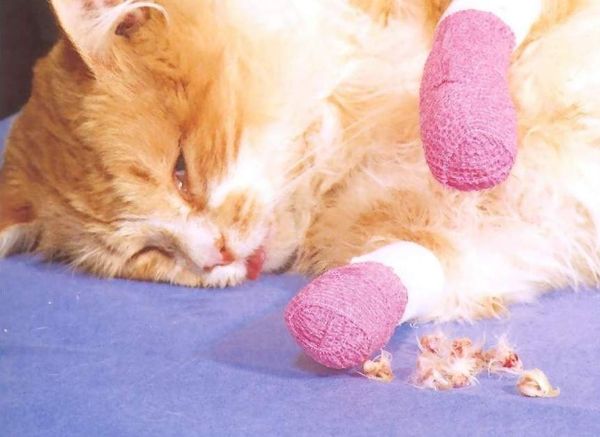
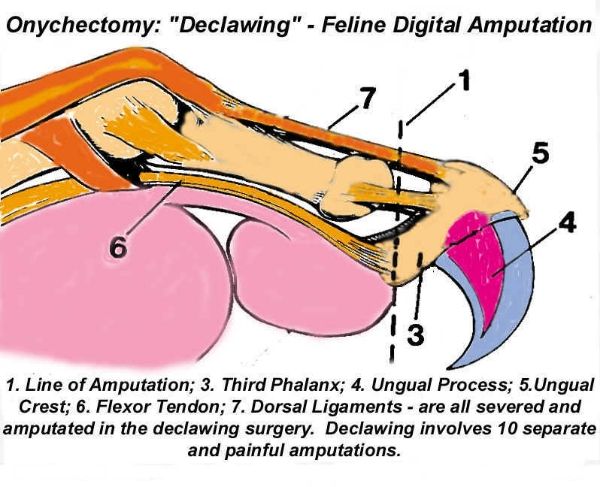
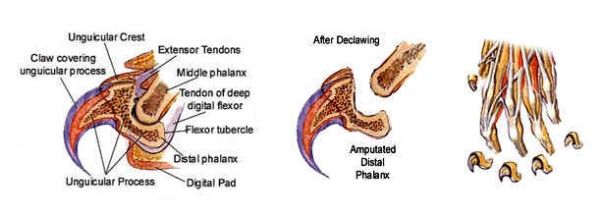






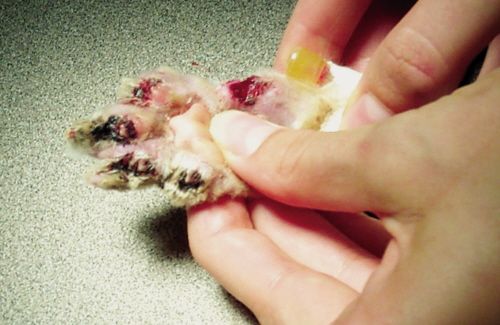
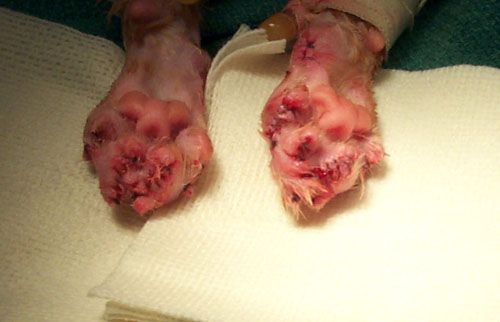
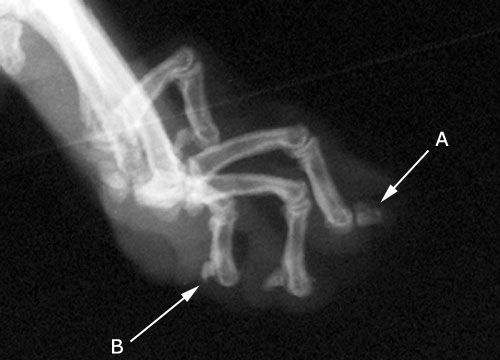





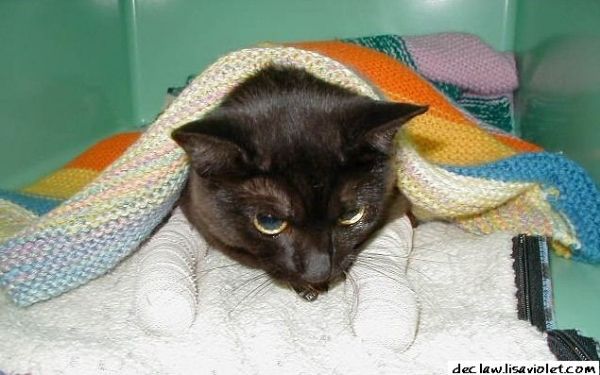

Nice articles and your information valuable and good articles thank for the sharing information pet hair remover
ReplyDelete